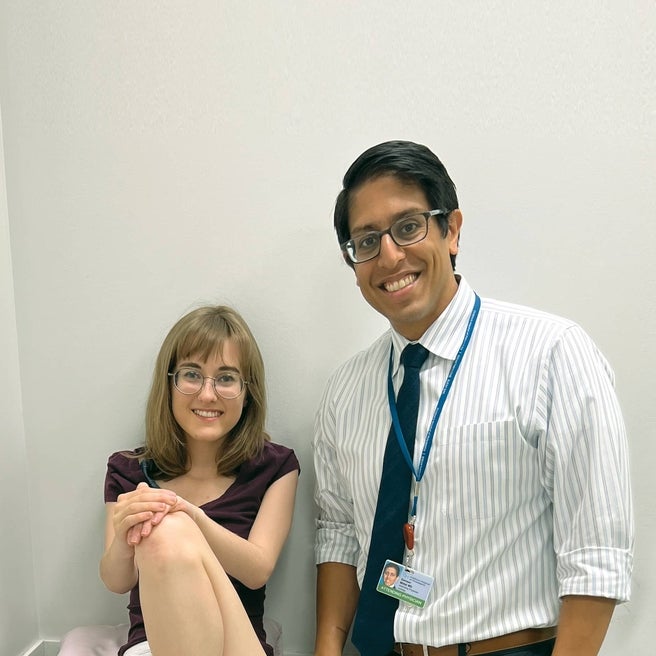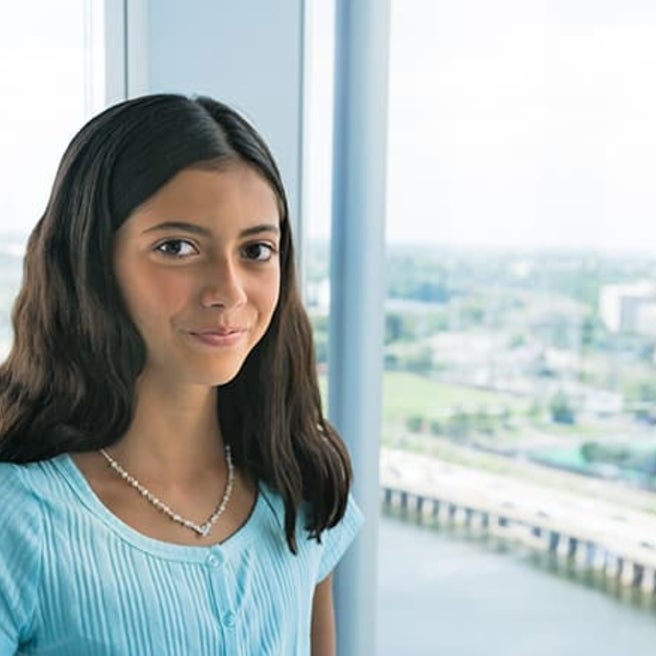What are kidney stones?
Normally, urine contains many dissolved materials. At times, some materials may become concentrated in the urine and form solid crystals. These crystals can lead to the development of stones. Most kidney stones contain calcium, specifically, calcium oxalate. Other types of stones contain things such as calcium phosphate, uric acid, cystine and struvite.
Kidney stones were once thought of as an adult diagnosis. The truth is that kidney stones in children have been on the rise for the past few decades. The Division of Urology used to treat just a handful of children with kidney stones a year, but today we are diagnosing, managing and treating children with kidney stones daily.
Watch our educational video series to learn more about our approach to treating kidney stones at The Children's Hospital of Philadelphia.
Risk factors
According to the National Institutes of Health (NIH), 1 out of every 10 people will develop kidney stones during their lifetime. Renal stone disease accounts for 7-10 out of every 1,000 hospital admissions.
Diet, genetics and lifestyle can all contribute to kidney stones. Several risk factors play major roles in stone formation:
- Loss of body fluids (dehydration). If your child does not drink enough fluids during the day, the urine can become quite concentrated and dark. This increases the chance for crystals to form in the urine because there is less fluid available to dissolve them.
- Diet. The type of food your child eats can also affect his chances of getting kidney stones.
- A high-protein diet can cause the acid in the body to increase. This decreases the amount of urinary citrate, a "good" chemical that helps prevent stones. As a result, stones are more likely to form.
- A high-salt diet is another risk factor. An increased amount of sodium passing into the urine can pull calcium along with it. This increases calcium levels in the urine, which increases the chance for stones. Eating oxalate-rich foods such as leafy green vegetables, tea or chocolate may make things worse.
- A family history of stones, especially in a parent or sibling, greatly increases the chance of having stones.
Signs and symptoms of kidney stones
Once stones form in the urinary tract, they often grow over time and may move within the kidney. Some stones may be washed out of the kidney by urine flow and end up trapped within the ureter. Stones usually begin causing symptoms when they block the outflow of the urine to the bladder.
Symptoms of an obstructing stone can vary. Most often, patients will complain of pain in their sides. This pain may also move toward the front of the abdomen or to the groin area.
Testing and diagnosis
If your child is suspected to have kidney stones, we'll perform a physical exam and take a careful medical history, not just of your child’s stone episodes, but any family history of stone disease. Blood and urine tests can help to determine the cause of the kidney stone.
Imaging studies can give your urologist information about the size, location and number of stones that are causing the symptoms. A simple X-ray of the abdomen is sometimes enough to pinpoint a stone in the area of the kidneys or ureters. A renal bladder ultrasound (RBUS) may be ordered to help find a stone and look for any signs of blockage. If the X-ray film or RBUS does not provide enough information to make a diagnosis, an abdominal/pelvic CT scan will be done. This test can detect almost all types of urinary stones.
A thorough evaluation allows your physician to choose the best treatments for your child.
Treatment for kidney stones
Many factors must be considered in the diagnosis, management and treatment of children with kidney stones. To address the unique needs of children with kidney stones, we created the Pediatric Kidney Stone Center, a program within the Division of Urology that is solely dedicated to the management of kidney stones. Last year, our Stone Center treated 392 patients with kidney stones.
Urology and Nephrology (doctors who focus on kidney health) work closely to treat patients seen at the Kidney Stone Center. Metabolism (doctors who focus on genetic disorders that affect the way the chemical reactions happen in the body) specialists help make sure all factors that may affect a child’s stone disease are addressed.
Many families are unfamiliar and uncomfortable with their child’s diagnosis of a kidney stone. We are committed to educating families about the diagnosis and tailoring a management plan specific to each patient. Treatment options may include medications, dietary therapy, nutritional assessments and counseling, or surgery.
We have an experienced surgical staff and a state-of-art approach using minimally invasive surgery (MIS) whenever surgical intervention is needed. Our outpatient management team helps families manage active stone disease and prevent stone recurrence.
To choose the best treatment for your child, your doctor will consider the size of the stone, the number of stones and their location. Most small stones can pass on their own. We may ask your child to ‘strain’ his urine with a special filter so we can send the stone for testing, if necessary, to determine what kind of stone it is.
Surgery may be needed if a stone:
- Does not pass within 15 days, a fever develops or causes constant pain
- Is too large to pass on its own
- Blocks the flow or urine
- Causes ongoing urinary tract infection
- Damages the kidney or causes constant bleeding
- Has grown larger (as seen on follow-up X-ray studies)
We use several procedures to break up, remove or bypass kidney stones. These procedures include:
- Lithotripsy – This procedure is effective for stones in the kidney or upper ureter. It uses an instrument, machine or probe to break the stone into tiny particles that can pass naturally. Lithotripsy is not appropriate for patients with very large stones or other medical conditions. This is performed in an outpatient setting. Watch a video for more information about Shockwave Lithotripsy Surgery at CHOP.
- Ureteroscopy – This is a long, thin fiberoptic telescope (ureteroscope) inserted through the urethra and passed through the bladder to the stone. It is used to remove or break up (fragment) stones with a laser. A small tube (or stent) may be left in the ureter for a few days after treatment to promote healing and prevent blockage from swelling or spasm. This is performed in an outpatient setting. Watch a video for more information about Ureteroscopy Surgery at CHOP.
- Percutaneous nephrostolithotomy (PCNL) – Percutaneous (through needle-puncture of the skin) removal of kidney stones (lithotomy) is accomplished by the surgeon threading various catheters over the guidewires into the kidney and manipulating surgical instruments through the catheters to fragment and remove kidney stones. This procedure usually requires hospitalization and most patients resume normal activity within two weeks. Watch a video for more information about PCNL Surgery at CHOP.
What to expect after treatment for kidney stones
Although each person is different, there is about a 50 percent chance of having another stone within the next five years. To help us determine what caused the kidney stone, we may ask your child to collect urine for 24 hours after a stone has passed or been removed to measure urine volume and levels of acidity, calcium, sodium, uric acid, oxalate, citrate and creatinine. Your child may also be asked to have a blood test to help us understand the reason her body is forming stones.
Prevention
There are things you can do to help prevent kidney stones from forming. The best ways to do that depends on the type of stone produced, underlying risk factors and how willing your child is to stick with a long-term prevention plan. Your child may need to change certain habits, such as drinking more fluids and changing his diet.
We recommend children with stone disease:
- Drink a minimum of half of their body weight in ounces of water daily. For example, an 80-pound child would drink 40 oz. of water each day. Proper hydration helps prevent the urine from becoming concentrated with crystals, which can lead to stones forming. It also reduces the risk for urinary tract infections, which can cause struvite stones. The color of your child's urine may give clues to the concentration of crystal: dark or bright yellow urine indicates highly concentrated urine, whereas pale or colorless urine indicates less concentrated urine. Lemonade with real lemon juice is a good source of citrate and may be recommended as an alternative to water.
- Limit meat, salt and foods high in oxalate, such as green leafy vegetables, chocolate and nuts. Do not limit calcium in your child's diet. Doing this can actually increase the risk of kidney stones.
We also may give your child medication to prevent kidney stones. If your child has an underlying condition that causes kidney stones, we will treat that as well.
Resources to help
Pediatric Kidney Stone Center Resources
Reviewed by Gregory E. Tasian, MD, MSc, MSCE


